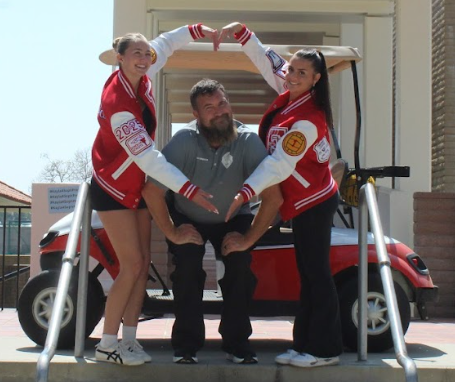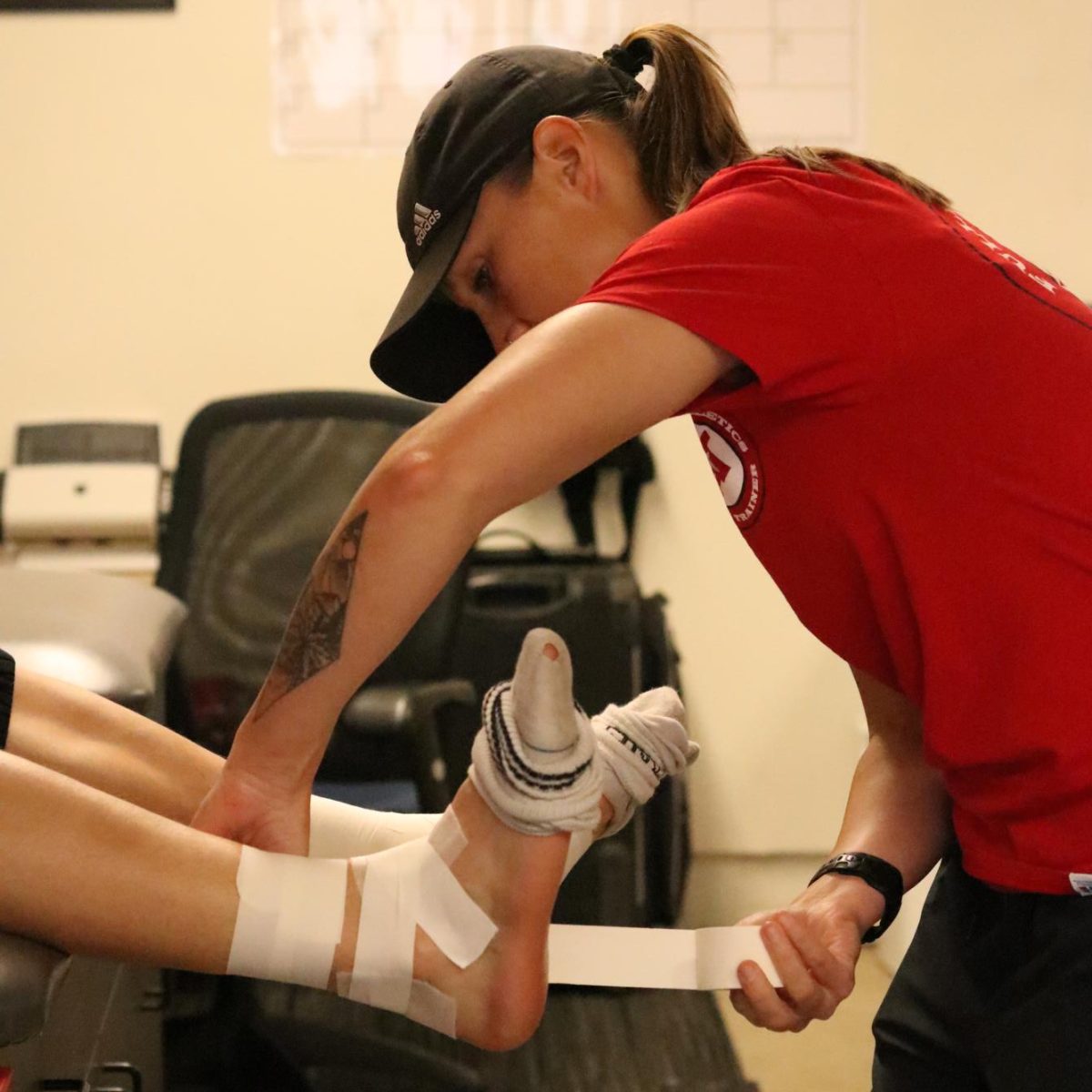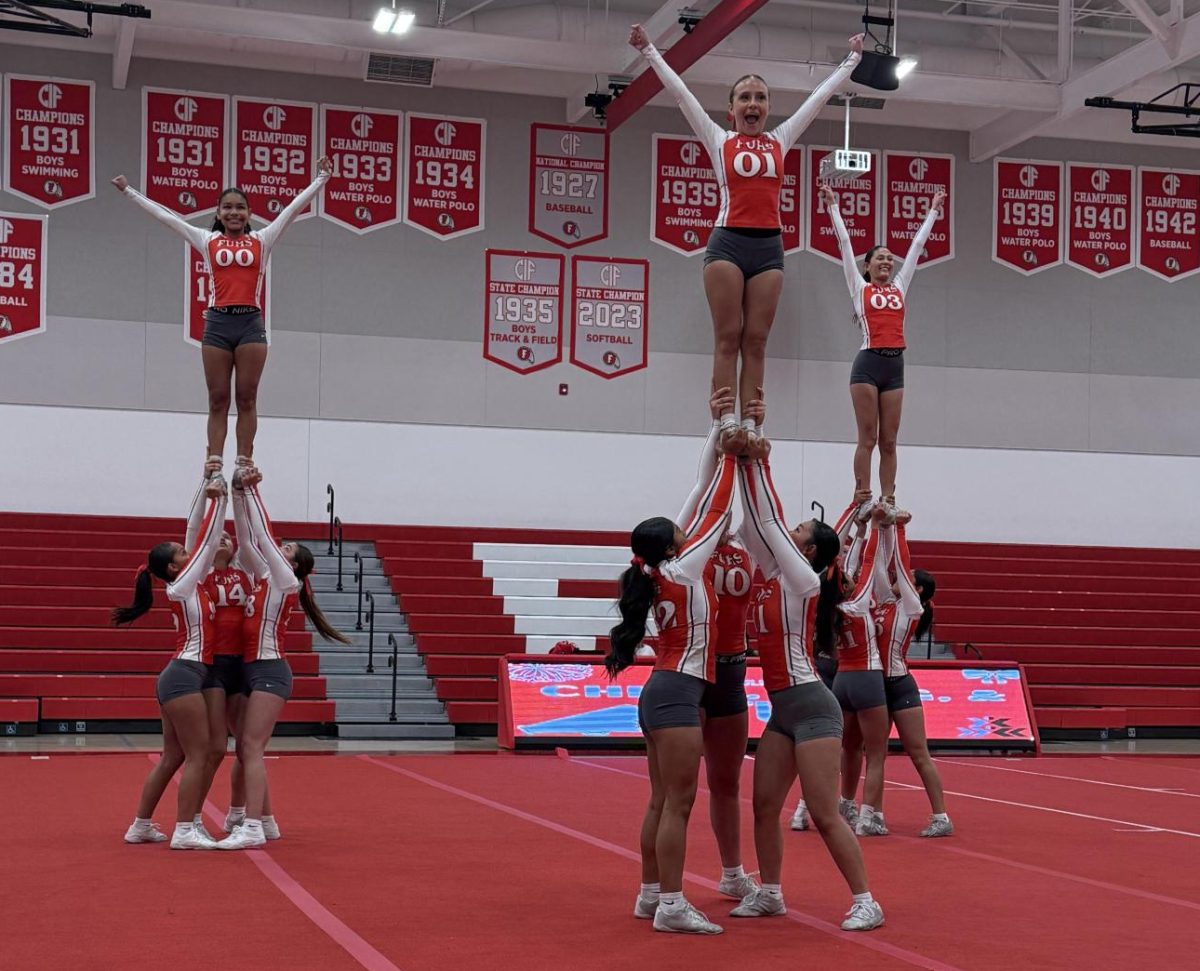Math question: The girls soccer program has 50 players and three teams. How many players should be assigned to each team?
Choice A: 18 Varsity, 16 JV, 16 Freshman
Choice B: 19 Varsity, 16 JV, 15 Freshman
Choice C: 24 Varsity, 15 JV, 11 Freshman
According to FUHS girls soccer coach George Maisterra, the answer is Choice C. When faced with this math problem, Maisterra said the best answer for the 2024-2025 season was to put four seniors, 14 juniors, five sophomores and one freshman on the varsity squad.
“There are a lot of reasons to put in a big number on varsity,” Maisterra said. “Number one, we’re always building for next year. We had a group of juniors this year that needed to get up to speed on how varsity works. It’s important that they have the experience so that when they’re seniors, they have the best opportunities to play.”
Maisterra says it’s important to challenge players. “Number two, we want to allow [the juniors] to grow,” he said. “If you keep a person in one area for too long, you’re going to hit a ceiling.”
Maisterra said that he didn’t want juniors to feel overly comfortable in their JV spots. Instead, he believes the freshmen and sophomores need the space to emerge as role models at the junior varsity level.
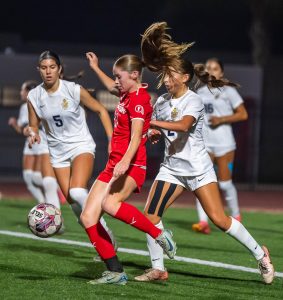
“We don’t want a group of juniors overwhelming incoming freshmen. It wasn’t that I didn’t want [juniors] to be leaders, but instead we have seniors that are leaders and [the juniors] get to learn from them,” Maisterra said.
Coach Maisterra added that the large number of players on the varsity roster was essential in order to imitate “game speed” in practice sessions.
“Reason three is that we need to replicate a game situation,” Maisterra said. “We need two teams of eleven [during practice]. As coaches, we need to create an environment in training that exceeds the intensity of games. That’s the best way to develop. We don’t want to hold training sessions where we just go through the motions.”
One varsity player confirmed the coach’s message, saying that Maisterra was clear about his 15-starter philosophy in which the same 15 players would most likely be on the field on game day. It was up to the remaining nine players to constantly fight for a spot in the Top 15.
Of course, by having a varsity roster of 24, some soccer players didn’t get much playing time. In fact, a few didn’t play at all.
One varsity player told the Tribune that she was required to attend every game even though she clocked zero minutes in League play.
“With the lack of playing time, it’s kind of not worth it,” she said. “[Maisterra] brought up a lot of people to varsity, but then most of those people, including me, didn’t get much playing time. There’s a bench full of people that don’t play.”
Maisterra says that he knows some players were disappointed with their lack of playing minutes, but he felt the large roster was the best choice.
“Some of these [junior] players that I brought up to varsity, at any other school, would have played JV, 100 percent,” Maisterra said. “I understand that particular groups of players on varsity would have definitely excelled on JV, but on JV we want everybody to play. We don’t want 10 players sitting on a bench for games on a JV team,” Maisterra said. “We needed to move them into a different atmosphere, so that they would be ready to play on varsity next year. That was the biggest reason we had such a large varsity team.”
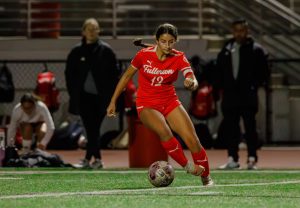
If varsity had too many players, the freshman team had too few.
With only 11 frosh players—the exact number of players needed on the field for a soccer game—the freshman team pulled players from the JV team each week on game days. Moving from JV to frosh to fill out the roster created a uniquely stressful situation for some freshman girls who were asked to play games for both the JV and frosh teams for several weeks. For example, a strong JV freshman player might be asked to play for frosh, JV, and varsity all in the same week.
When the FUHS soccer program had a large incoming freshman class, Coach Maisterra opted to create a new freshman team that would invite players with no background in soccer. Johnny Carroll, coach for both the frosh and JV teams, said he appreciated that Maisterra welcomed new athletes.
“There are people here that have never played soccer before,” Carroll said. “So that means at this school, whether you had experience or you were new, you had an opportunity here.”
While the program was certainly inclusive of all ability levels, the weakest freshman players were stuck on the bench when the experienced JV freshman players were moved down to fill out the game-day roster. One of the JV freshmen, who also played on the frosh team, said she was glad for the extra playing time, but she felt that it was unfair for her to take the spot of a frosh player.
“[The coach] called a bunch of people down from JV for a frosh game, and then he played only JV players the entire time, and not one frosh player came in,” she said. “On JV, I think while not everyone got a fair amount of playing time, at least everyone got some time. But some frosh players would get no playing time, even though their team was so small.”
So while some freshmen on the frosh team sat out games, there were about seven freshmen on the JV team who worked overtime.
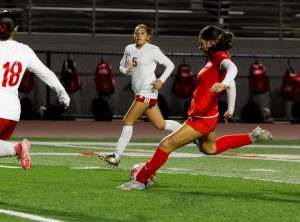
At one point, the freshman junior varsity players had four games during the school week and a tournament on the weekend, which added up to eight games in the span of seven days. In all eight games, substitutions were rare, with the freshman JV players playing on the field for 70 minutes. According to a study by Sports Illustrated, soccer players run around 6.4 miles per game, which for some JV girls would mean 51.2 miles in a single week. This sharp increase in mileage caused wear-and-tear on joints and muscles, according to multiple JV players. One player reported multiple injuries including twisted ankles, pulled muscles, and joint inflammation. While injuries usually earn athletes front row seats on the bench, with FUHS’s lack of substitutions, these girls played full 70 minute games on strained muscles.
“More people were getting injured, which made it harder to play because the same girls tend to have to play full-length games which caused them to get more injured,” a junior varsity player said about the season. “It’s like a repeating cycle.”
Moreover, all of the issues that regular student-athletes face were multiplied for the JV girls when the number of games on their schedule doubled. They missed their fifth-period classes multiple times a week to play on home turf or travel for away games, and their missing work piled up.
With the recent league change, Fullerton faced opponents such as Westminster and Calvary Chapel. Both of those schools are around 30 minutes away from Fullerton, which is a much longer commute than the 5-minute drive to Troy High School or 10-minute drive to Sunny Hills High School when the team was in the Freeway League. With this time on the road in mind, and the minimum of 45 minutes of warm up time, soccer players are expected to be on the bus around an hour and a half to two hours before the game is scheduled to begin, causing them to leave school as early as fourth period on game days. This time away from class adds up as the number of games on the student-athletes’ schedules increases.
On game days, changes were made to the roster minutes before the first whistle was blown with little time to change into their uniforms, gather their belongings, and meet the team on the bus.
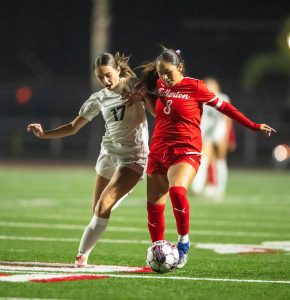
“When dates and times are changed, it’s really last minute,” said another JV player. “On the same day that we have the game, people are getting dropped down and moved around to different games.”
Of course, despite the chaos, the girls soccer teams were successful, including varsity’s first place finish in the Golden West League. But what the Tribe Tribune discovered is that there is more to enjoying sports than the final standings.
When average players invite their parents to a game, they want to know they’ll get to play at least a few minutes. Top athletes want to know they’ll be expected to play on only one team during the season (not two).
So, what’s next?
The girls varsity soccer team has only four graduating seniors. Therefore, the soccer program should be able to find enough good players among the expected 495 incoming freshmen next year to build three full squads. And the numbers mean that next year’s JV will have some junior players, too.
Ultimately, what players told the Tribe Tribune is that they hope for balance. We also found the issue isn’t just about soccer. All coaches make tough choices when building their rosters to set up their teams for the best chance at success.
But more playing time and less confusion adds up to happier players. And happier players can equal more wins.
Just do the math.








